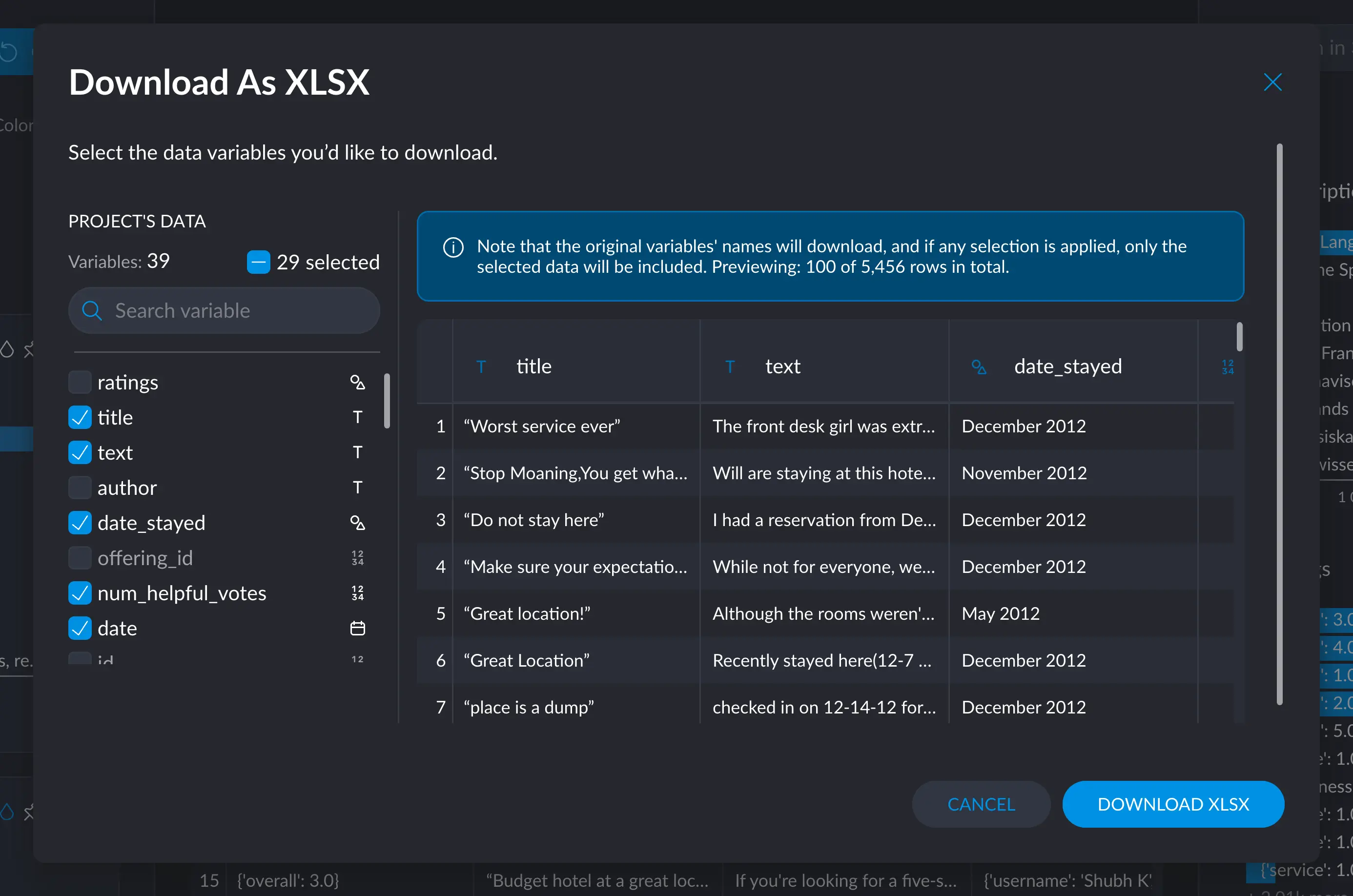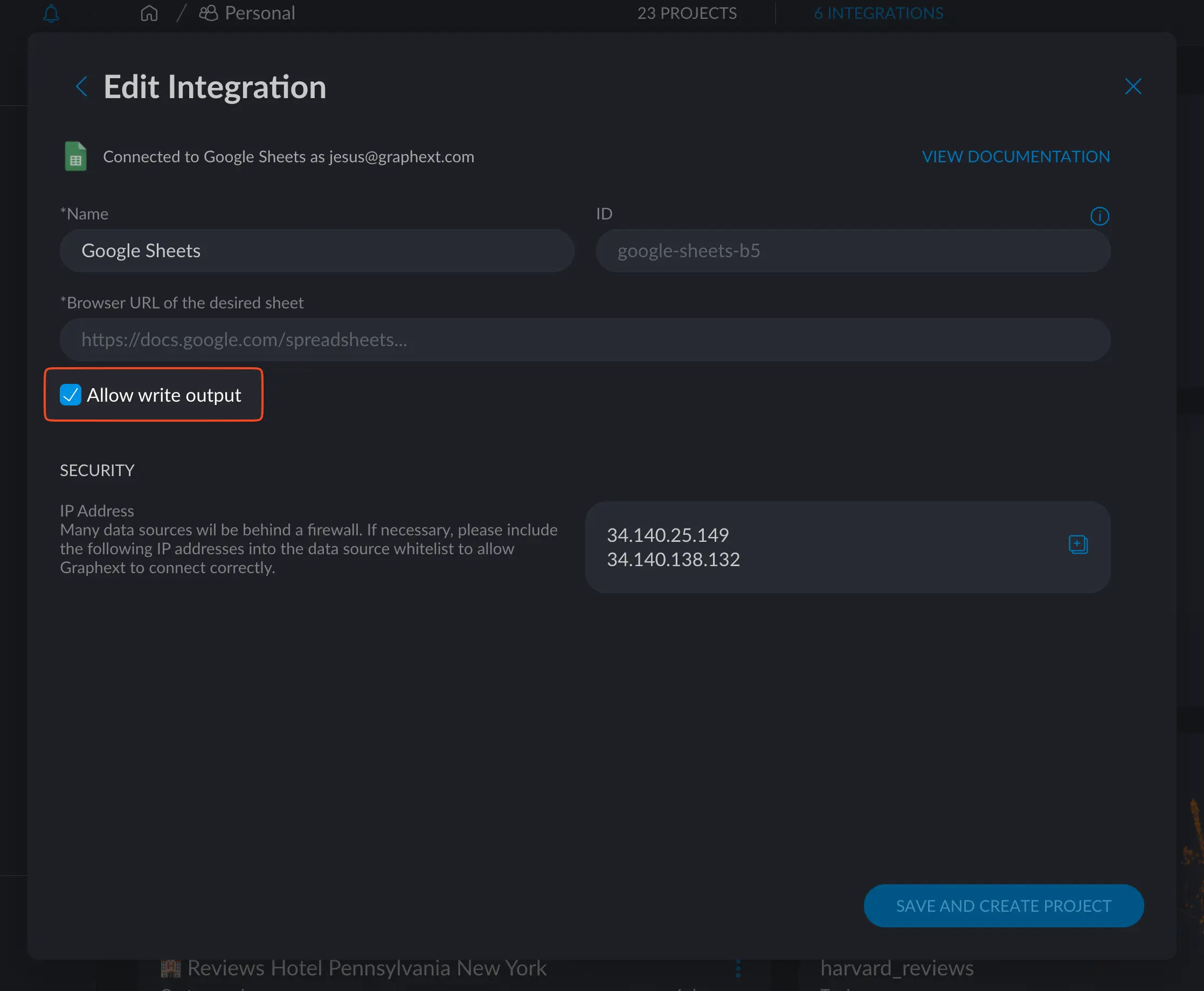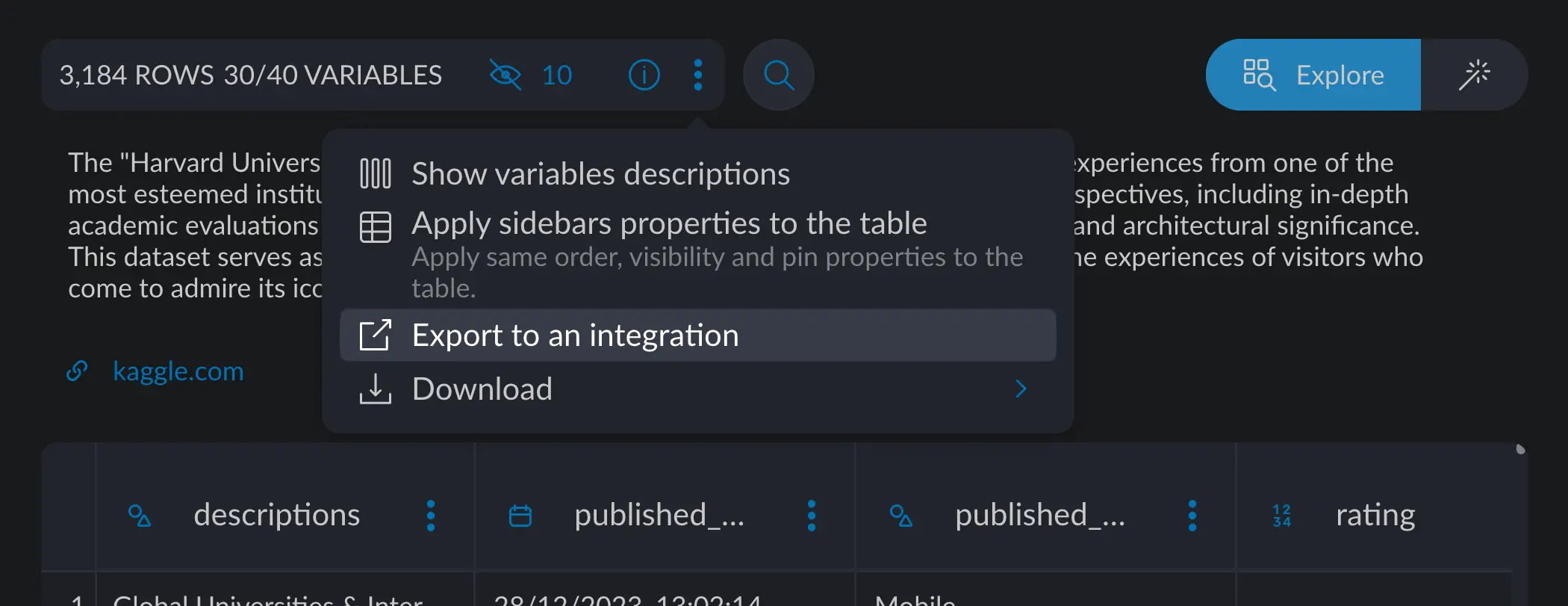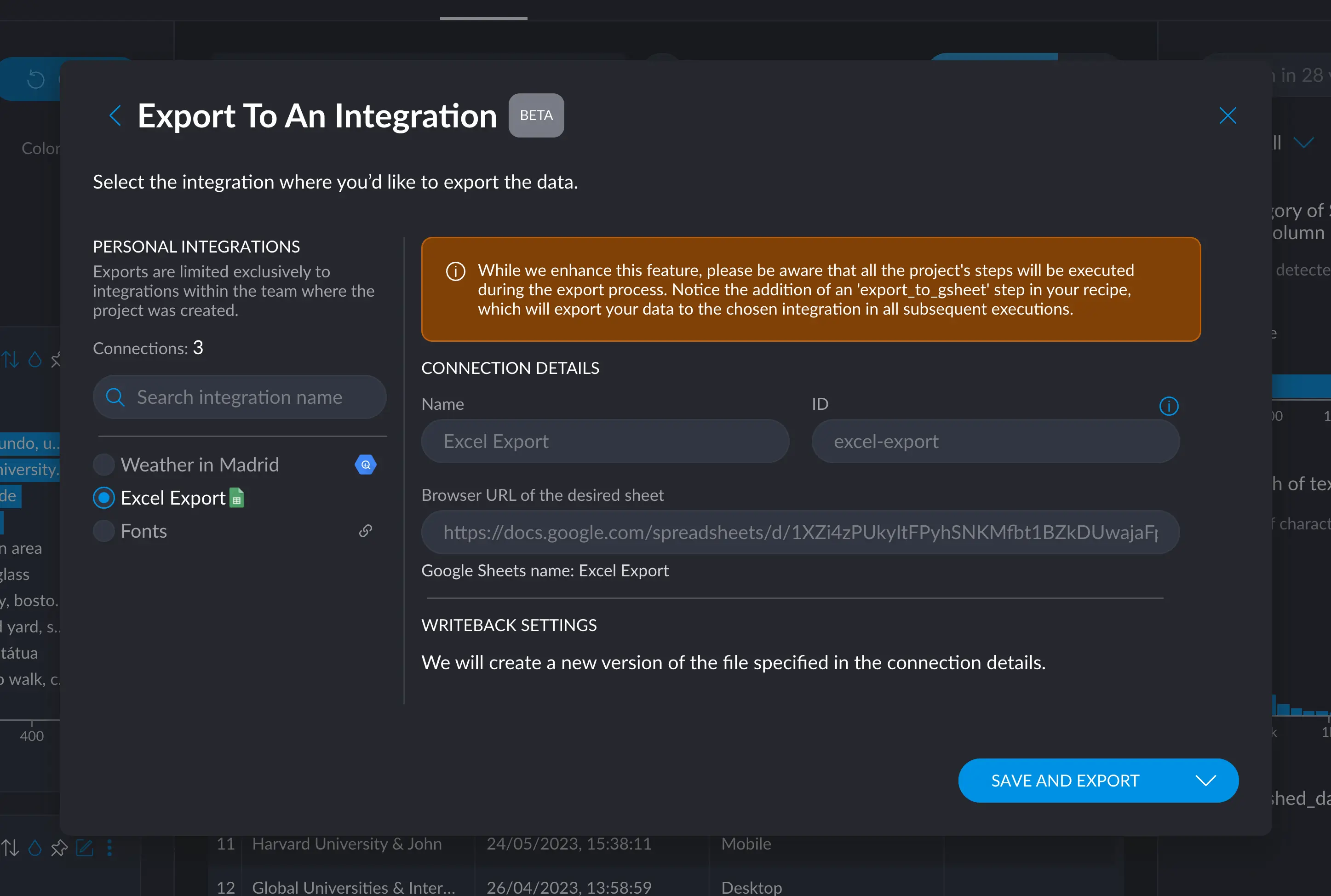Graphext allows you to export your data in several ways, either directly downloading it or even
exporting it to your integration of choice.
Downloading your data
The most straightforward way to export your data is to simply donwload it.
You can download the data in 3 different ways:
- Download the original dataset, without modifications
- Download a subsection of the dataset as an Excel® file
- Download a subsection of the dataset as a CSV file
For the last two options, this menu will pop up.
This will allow to make a selection of the columns you want to download.
As stated in the blue note, any selection you have currently applied in your data will
be used to filter the resulting download.
In the case you created a graph or a model, the worflows create some utility
columns as calculations from your data. These are excluded from the selection
by default, but can be added back if desired.
Exporting to an integration
In the case you have an integration setup and give it write access, you can export any data to it.
For this, you have to setup at least one integration in which the option “Allow Write Ouput” is enabled. This
will allow Graphext to dump any data onto it.
Projects and integrations are not necessarily related. You can export data
from any project to any integration as long as the given integration had the
option “Allow Write Ouput” when it was created.
If the project you are trying to export from belongs to a team, and no one in the team created an integration,
this message will show up:Any member of the team can create an integration that any member of the team will be able to use once setup. 






